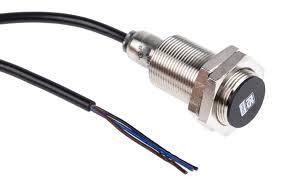The inductive proximity sensor market has become a foundational component in industrial automation, manufacturing, and machinery operations. These sensors are valued for their durability, accuracy, and ability to detect metallic objects without physical contact. However, despite widespread application across sectors like automotive, electronics, packaging, and logistics, the market continues to face notable pain points. These challenges hinder full-scale deployment, limit innovation, and affect overall customer satisfaction. Addressing these obstacles is critical for sustaining market momentum and unlocking new opportunities.

Limited Material Detection Capabilities
One of the most fundamental limitations of inductive proximity sensors is their inability to detect non-metallic materials. Unlike capacitive or photoelectric sensors, inductive sensors rely on electromagnetic fields to sense metallic targets, making them ineffective for detecting plastic, wood, glass, or organic materials. This material constraint narrows their usability, particularly in applications involving mixed-material packaging or non-metal object tracking.
As industries become more diversified in the types of materials they handle, this limitation is a significant pain point. Companies must often integrate multiple sensor types to achieve complete detection coverage, increasing system complexity and cost.
Short Sensing Range and Size Constraints
Inductive proximity sensors typically have limited sensing ranges, often between 1mm and 40mm depending on the model and target material. In comparison to ultrasonic or laser-based sensors, this short detection range restricts their use in applications requiring greater object distance measurement or large-scale automation systems.
Additionally, although miniaturization is improving, there are still form factor limitations when it comes to embedding sensors into compact or curved surfaces. Industries that rely on highly integrated or miniaturized components—such as robotics, electronics, or aerospace—find it challenging to use standard inductive sensors without compromising system design or requiring custom modifications.
Susceptibility to Environmental Interference
While inductive sensors are known for ruggedness, they can still be affected by extreme environmental conditions, such as high temperatures, moisture, vibration, or exposure to corrosive chemicals. These conditions can reduce sensor lifespan, alter calibration, or lead to inaccurate readings.
In harsh industrial settings like mining, marine, or chemical processing, users often need protective housing, sealing, or redundant systems to ensure performance, which drives up costs. In addition, electromagnetic interference (EMI) from nearby machinery or power systems can disrupt sensor functionality, especially in densely packed manufacturing lines.
Integration and Compatibility Challenges
As industries evolve towards smart manufacturing and IoT-driven systems, there is increasing pressure on inductive sensors to integrate seamlessly with advanced control architectures. Many legacy inductive sensors, however, lack modern communication protocols such as IO-Link, Ethernet/IP, or wireless connectivity. This creates integration challenges in digital ecosystems, requiring additional hardware or middleware to make older sensors compatible.
The lack of standardization across manufacturers also complicates integration. Engineers often face difficulties when swapping or scaling sensors from different brands due to differences in size, mounting, voltage levels, or signal outputs, slowing down deployment and increasing maintenance complexity.
High Initial Investment and Cost Sensitivity
Although inductive sensors are relatively affordable compared to some advanced alternatives, the total cost of ownership can still be a concern for price-sensitive industries. Custom configurations, rugged designs, or sensors with smart features come at a premium. When deployed at scale—such as in automotive assembly lines or warehouse automation systems—even small cost differences can lead to significant capital expenses.
Small and medium enterprises (SMEs), especially in emerging markets, often struggle with these costs. They may resort to cheaper, less reliable alternatives that compromise long-term efficiency or require frequent replacements, creating a cycle of recurring costs and performance issues.
Limited Availability of Skilled Technicians
Another pain point lies in the shortage of trained personnel capable of properly selecting, installing, and maintaining inductive proximity sensors. Misalignment, incorrect configuration, or poor integration can result in operational inefficiencies or sensor failures. As smart sensors become more complex, this skills gap widens.
Industries with high turnover or limited training budgets face downtime risks and increased maintenance demands, especially when adopting sensor-based systems without sufficient internal technical expertise.
Inadequate Data and Predictive Capabilities
Traditional inductive proximity sensors operate in a binary mode—they either detect a metal object or they don’t. While this simplicity offers reliability, it limits the potential for predictive maintenance, real-time analytics, or condition monitoring. In an era where data-driven decision-making is becoming standard, this limitation reduces the strategic value of legacy sensors in smart environments.
Modern sensor models with self-diagnostic or real-time data output exist, but adoption is low due to cost, complexity, and lack of awareness. The transition from basic to intelligent sensors remains a slow process for many manufacturers.
Conclusion
The Inductive Proximity Sensor Market continues to offer immense value across industrial and manufacturing landscapes. However, its full potential is hindered by critical pain points—ranging from limited material detection and short sensing range to integration challenges and cost pressures. As demand grows for smarter, more adaptive, and environmentally resilient solutions, addressing these pain points will be essential. Manufacturers must focus on innovation, cross-platform compatibility, and user training to ensure long-term adoption and customer satisfaction in a rapidly evolving market environment.


